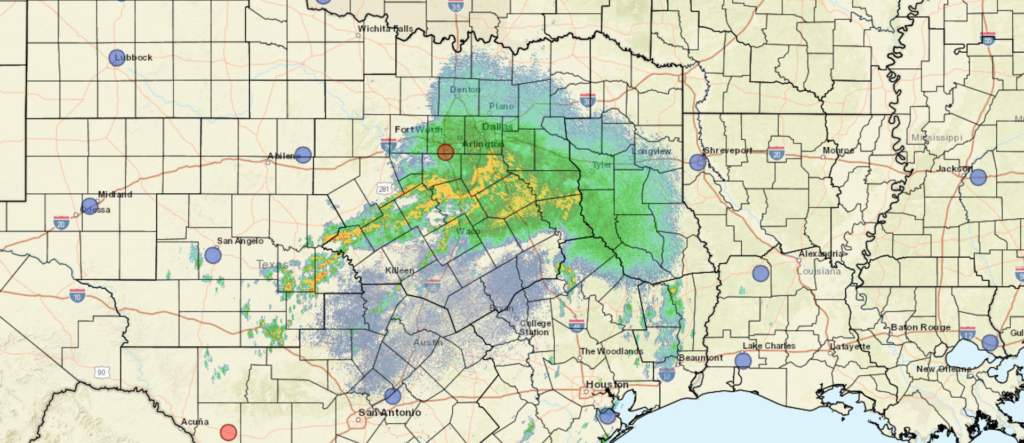The remnants of a weak tropical feature came ashore in Texas over the weekend, noted only in reference to how quiet the Tropics have been this season. This weak, nameless blob was about all that had troubled North America this summer so far. It gathered a lot more attention overnight into this morning by dumping torrents of rain on the Dallas metro, leading to flash flooding throughout the Big D and Fort Worth.
At least 2 inches of rain have fallen in broad swaths of North Texas and up to 8 were estimated in some spots, making city streets waterlogged and impassable in some places. Radar shows that more rain is coming, though fortunately, Fort Worth should be drying out.

Flash flooding is different than river flooding, in that the onset is much more rapid and isn’t necessarily confined to existing waterways. River flooding can be planned a bit better for evacuations and bracing for the impacts of rising rivers, but flash flooding, like the rain in Dallas, can happen with a lot of rain coming in just a few hours, and is not as easy to anticipate.
There are two particular amplifiers of flash flooding. One of them is the increasingly paved surfaces we find in urban areas. Water pools, unable to drain from roadways, and can cause vehicles to hydroplane or even float. If the water is moving, for example if a nearby waterway has spilled out of its banks, or if the inundated roadway slopes, just a few inches of water are enough to move a vehicle. If water is deep enough, it can cause engines to stall.
The worst case scenario for flash flooding is usually found in hilly or mountainous terrain, such as what happened in eastern Kentucky this summer. Rainwater is channeled into valleys, causing existing rivers and creeks to rise quickly, and sweep away mud, trees and edifices in the water’s path downward. Unlike normal river flooding, which arises from water coming downstream after snow melts or a long, wet season, flash flooding happens in an instant as water flows downhill. Some of the deadliest flash flooding instances in the US occurred in Oregon and Colorado.
Heavier rains are a response to slow moving storms with higher dew points, and are possible even when severe weather hasn’t occurred. It’s always important to stay aware of your surroundings, and not pass through standing water, because you never know what lies beneath.
